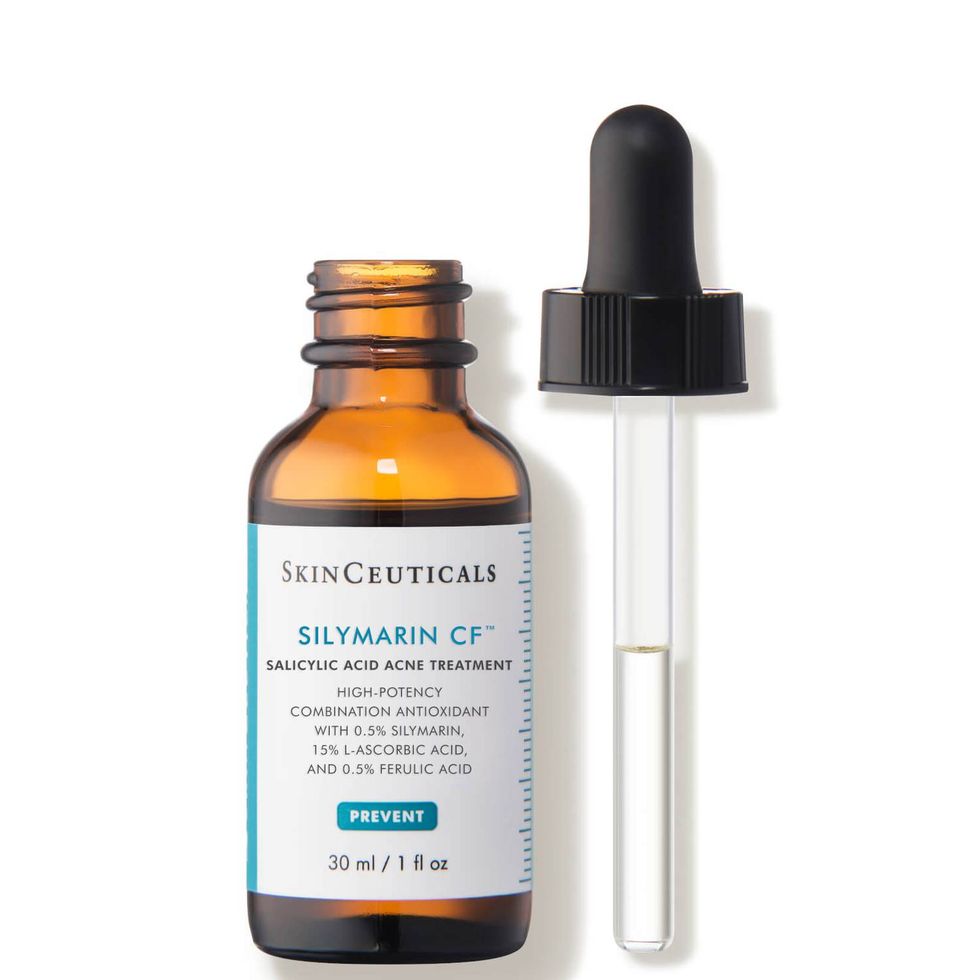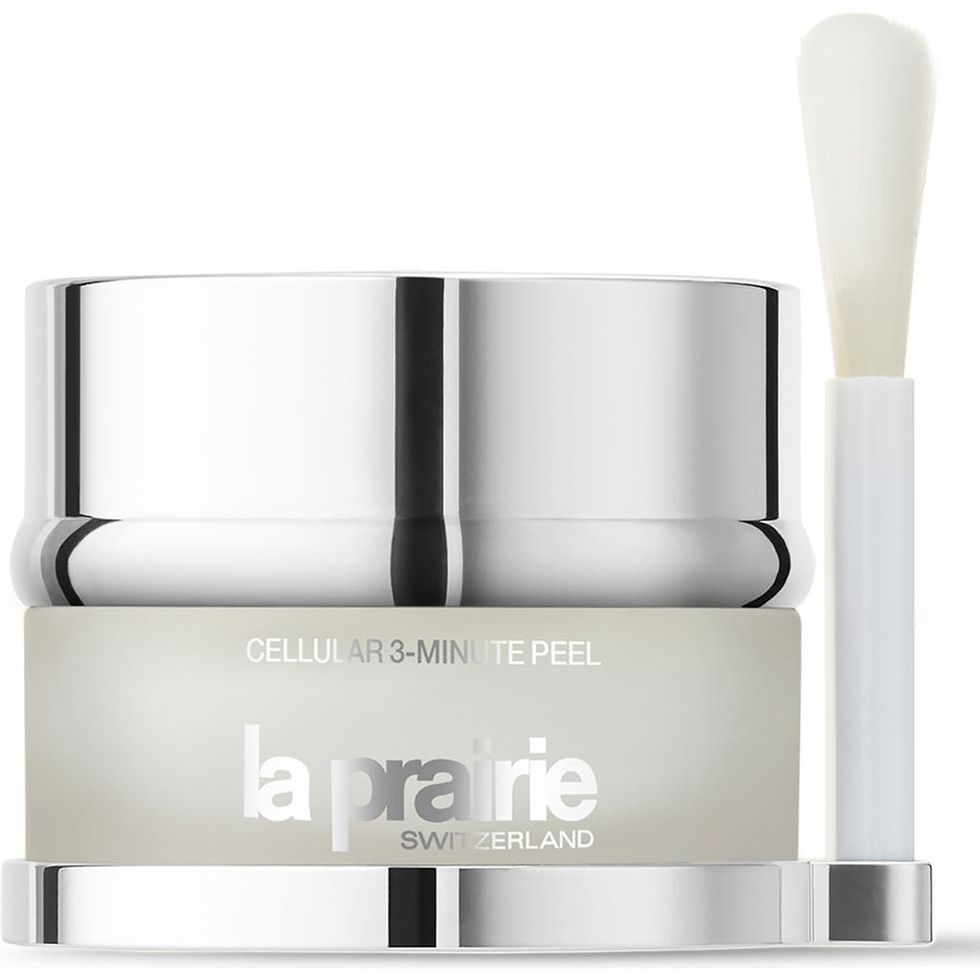
Whether you’ve been struggling with stubborn whiteheads and blackheads or looking to revitalize your dull complexion, you may have seen this one ingredient in many skincare products: salicylic acid. A key player in an acne-fighting skincare routine, it’s best known for its exfoliating and bacteria-fighting powers.
Although salicylic acid is common in skincare, especially in acne products, there’s a lot that people are wondering about it — if it can be used every day, what the benefits and side effects are and how to use it, to name a few. Ahead, answers to all the questions you have about salicylic acid directly from dermatologists and experts.
What is salicylic acid?
Salicylic acid is a beta hydroxy acid (BHA), a type of carbon-based organic compound that naturally occurs in willow bark, fruits and vegetables, according to Caren Campbell, M.D., a San Francisco-based dermatologist. “BHAs are lipid/fat soluble and can penetrate into pores to unclog blackheads,” says Good Housekeeping Institute Beauty Lab Senior Chemist Danusia Wnek. Not only does salicylic acid fight bacteria, but it also reduces inflammation and exfoliates the skin, explains Dr. Campbell.
More From Good Housekeeping
What are the benefits of salicylic acid?
“Salicylic acid is an excellent pore-clearing ingredient because it exfoliates the surface of the skin and penetrates into pores to remove oil,” says Hadley King, M.D., a board-certified dermatologist in New York City. “This helps to prevent pores from becoming clogged and can help remove clogs that have already formed.”
As an oil-soluble BHA, salicylic acid has the ability to remove any excess oil and dead skin cells. Dr. Campbell says it works by breaking down the “glue” between the cells to exfoliate and decrease oil secretion.
Key benefits of salicylic acid:
- Fights acne
- Removes dead skin cells
- Decreases oil secretion
- Reduces inflammation and redness
Along with treating pimples, you may have seen salicylic acid in products that “rejuvenate” or “brighten” your skin. That’s because it’s “used as a milder chemical peel for acne-prone patients or patients wanting a less intense peel,” explains Dr. Campbell. “At higher concentrations, it is used to treat warts and other skin growth as it breaks down skin cells.”
What does salicylic acid do for your skin?
Salicylic acid “is a great ingredient for people with oily and acne-prone skin, and particularly for treating and preventing comedonal acne (blackheads and whiteheads),” says Dr. King. So, not only does it treat current breakouts, but it can also help prevent future ones as well.
Similarly to other anti-aging products, it “will help expedite cellular turnover and also can reduce swelling and redness,” says Corey L. Hartman, M.D., a board-certified dermatologist and founder of Skin Wellness Dermatology in Birmingham, AL.
At higher concentrations, it can be used to treat cystic acne, but you should always consult your dermatologist first. People with dry or sensitive skin should take extra caution as this ingredient can further dry out and irritate the skin.
How do you use salicylic acid on your face?
Salicylic acid can be applied on your face in various forms, from cleansers to spot treatments to serums. “I like salicylic acid spot treatments, serums and liquids meant to stay on the skin, versus a cleanser that is on the skin briefly and then is washed off,” says Dr. Hartman.
A serum may be more effective than others, because it “usually has smaller molecules of an active ingredient, which will penetrate deeper into the skin,” he adds. If you have more sensitive skin and you can’t tolerate a full face application of salicylic acid serum, a spot treatment may be right for you, advises Dr. Hartman.
Can you use salicylic acid every day?
Salicylic acid is safe to use every day, but don’t run to add it to your daily regimen too quickly. It has the potential to irritate and dry out your skin, so start slowly.
“I would suggest starting once or twice per week, increasing the frequency as tolerated,” says Dr. King. “This will depend on how sensitive your skin is and what other products you are using.”
As you build up tolerance, you will be able to apply it more often — Dr. Hartman shares that many patients can use it every day.
What are the side effects of salicylic acid?
If used in high concentrations or too frequently, salicylic acid “can cause skin irritation and dryness,” says Divya Shokeen, M.D., a board-certified dermatologist based in Southern California.
Dryness, flaking and irritation aren’t the only side effects: “It can also cause skin lightening if used in high concentrations or if left on the skin for too long,” Dr. Shokeen adds. It’s important to follow the instructions on the product label and to consult with a board-certified dermatologist if you experience any adverse reactions.
Does salicylic acid remove dark spots?
Yes, but don’t expect to see immediate changes. “It can help fade dark spots over time, but it should be used in combination with other ingredients like vitamin C, niacinamide and hydroquinone for best results,” says Dr. Shokeen.
If you want to lighten dark spots, Dr. Hartman recommends opting for a salicylic acid serum or daily toner.
What are the best salicylic acid products?
You can get salicylic acid over-the-counter, but not at prescription strength. “Salicylic acid is OTC at lower concentrations, usually 1 to 5%,” says Dr. Campbell. These OTC salicylic acid products are used for gently exfoliating the skin and treating breakouts. If you have super sensitive skin, look for a lower percentage salicylic acid treatment (1% or lower).
“Salicylic acid peels are closer to 10 to 30% and should be applied by a board-certified dermatologist or plastic surgeon or under their supervision by a certified aesthetician,” adds Dr. Campbell. These higher strength prescriptions offer the same benefits as the lower strength products, but they are more potent, producing greater results.
Freelance Writer
Tatiana Velasco is a New York City-based beauty writer who joined Good Housekeeping in 2020 as a Beauty Intern and continues to produce stories for the brand as a freelancer. She received a Bachelor of Arts in journalism at New York University where she also worked as a writer and editor for the student newspaper, Washington Square News. She is passionate about skincare, hair care, health and fitness. When she’s not researching and sampling beauty products, you can find her working out at the gym, hiking on the Appalachian Trail or relaxing with a good book.
Beauty Assistant
Catharine (she/her) is the beauty assistant at Good Housekeeping, Woman’s Day and Prevention, working closely with the Good Housekeeping Institute Beauty Lab to write science-backed beauty content. She was previously an assistant beauty editor at Group Nine Media and returned to Hearst in 2022 after having held editorial internships at Harper’s Bazaar and CR Fashion Book. Catharine received a B.A. in journalism from the University of Southern California’s Annenberg School for Communication and Journalism.
Xhicboutique.com – Find this Product & More at Discount Prices!
Source link








